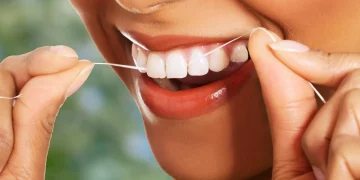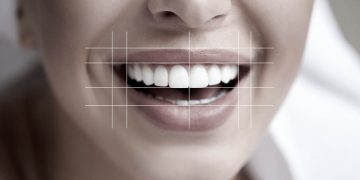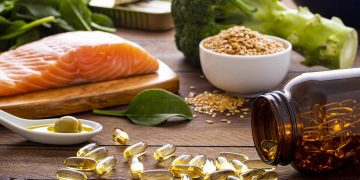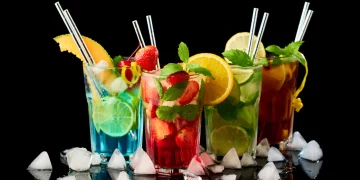A healthy smile depends not only on how well you brush and floss but also on what you eat every day. Certain foods can dramatically increase the risk of tooth decay and enamel erosion—even if your oral hygiene routine is solid. Understanding which foods harm your teeth can help you make smarter dietary choices and protect your oral health long-term.
Here’s a detailed look at the foods and drinks most commonly associated with increased risk of cavities, enamel damage, and gum problems.
1. Sugary Candies and Sweets
Examples: Hard candies, gummy bears, caramels, lollipops, toffees
These sweets are packed with simple sugars that feed harmful bacteria in your mouth. As bacteria digest the sugar, they produce acids that break down tooth enamel.
Why they’re harmful:
- Sticky candies cling to teeth and are hard to brush away.
- They create an acidic environment in the mouth that lasts for hours.
- Frequent snacking on sweets keeps acid levels high.
Better alternatives: Sugar-free gum or xylitol-based mints.
2. Sodas and Sugary Beverages
Examples: Cola, flavored sodas, energy drinks, sweetened iced teas
Sodas are a double threat—they’re high in sugar and extremely acidic. Even sugar-free sodas often contain acids (like citric or phosphoric acid) that weaken enamel over time.
Why they’re harmful:
- Cause direct enamel erosion even before bacteria are involved.
- Promote dry mouth, reducing saliva’s protective role.
- Sipping throughout the day prolongs acid exposure.
Better alternatives: Water, herbal tea, or sparkling water without added acids.
3. Citrus Fruits and Juices
Examples: Lemons, oranges, grapefruits, limes, lemonade
Citrus fruits are rich in vitamin C but also highly acidic. Regular consumption can soften enamel, making teeth more vulnerable to decay.
Why they’re harmful:
- Acid directly erodes enamel.
- Juices often contain added sugars, increasing cavity risk.
Better alternatives: Eat citrus in moderation and rinse with water afterward.
4. Starchy Refined Carbohydrates
Examples: White bread, potato chips, crackers, pastries
These foods break down into sugars quickly and often get stuck in the grooves of your teeth. They feed the same acid-producing bacteria that sugar does, but their effect is often underestimated.
Why they’re harmful:
- Convert to sugar in the mouth.
- Tend to stick between teeth and in crevices.
- Can cause plaque buildup if not removed promptly.
Better alternatives: Whole grains or fiber-rich snacks that are less sticky and more nutrient-dense.
5. Dried Fruits
Examples: Raisins, dried apricots, dates, fruit snacks
Although they seem healthy, dried fruits are highly concentrated in natural sugars and have a sticky texture that clings to teeth.
Why they’re harmful:
- Easily stick in hard-to-reach areas.
- Feed oral bacteria for prolonged periods.
- Often perceived as “healthy,” so people may overconsume them.
Better alternatives: Fresh fruits, which contain more water and are easier to clean from the mouth.
6. Alcoholic Beverages
Examples: Wine, beer, spirits with mixers
Alcohol, especially when consumed frequently, reduces saliva production. Some alcoholic drinks, like wine, are also acidic and can stain enamel.
Why they’re harmful:
- Promote dry mouth, which leads to more bacteria and plaque.
- Wine contains natural acids that wear down enamel.
- Mixers often include sugar and citrus (like tonic or cola).
Better alternatives: Drink in moderation, alternate with water, and maintain hydration.

7. Vinegar-Based Foods and Sauces
Examples: Pickles, salad dressings, ketchup
Foods and condiments containing vinegar or other acids may contribute to enamel erosion when consumed frequently.
Why they’re harmful:
- Vinegar is acidic and can weaken enamel.
- Acidic sauces often go unnoticed as sources of enamel wear.
Better alternatives: Use acidic dressings sparingly, and rinse your mouth with water afterward.
Tips to Minimize Damage from Harmful Foods
Even if you occasionally consume some of these foods, you can reduce their impact on your teeth by following these tips:
- Limit frequency of exposure: Have acidic or sugary foods with meals rather than as snacks.
- Drink water after eating: Rinse your mouth to neutralize acids and wash away sugars.
- Avoid brushing immediately after acidic foods: Wait 30 minutes to allow enamel to re-harden.
- Use a straw for sugary or acidic drinks: This limits contact with teeth.
- Chew sugar-free gum: Stimulates saliva flow to protect and clean your teeth naturally.
Conclusion
Not all foods are friendly to your smile. Sugary, sticky, and acidic items can accelerate tooth decay and enamel erosion if consumed regularly and without caution. By being mindful of your diet and making a few smart substitutions, you can protect your teeth from early decay and enjoy better oral health.
A strong, healthy smile starts with informed eating choices—and your teeth will thank you for it.













































Discussion about this post